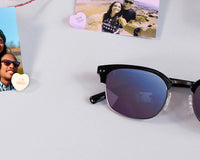
Face Mask: What Types, When and How to Use
In late 2019, a novel coronavirus emerged in China. Since then, it has rapidly spread throughout the world. This novel coronavirus is called SARS-CoV-2 and the disease that it causes is called COVID-19.
While some with COVID-19 have a mild illness, others may experience difficulty breathing, pneumonia, and even respiratory failure. Older individuals and those with underlying health conditions are most at riskTrusted Source for serious illness.
You may have heard a lot recently about using face masks to prevent infection. In fact, one recent studyTrusted Source found that Google searches related to face masks spiked in Taiwan following the country’s first imported case.
So, are face masks effective and if so, when should you wear them? Read on to learn the answers to this question and more.
What are the three primary types of face masks?
When you hear about face masks for COVID-19 prevention, it’s generally three types:
- homemade cloth face mask
- surgical mask
- N95 respirator
Let’s explore each of them in a little more detail below.
Homemade cloth face masks

To prevent the spread of the virus from people without symptoms, the Centers for Disease Control and Prevention (CDC) is now recommendingTrusted Source that everyone wears cloth face masks, such as homemade face masksTrusted Source, while in public places where it’s difficult to maintain a 6-foot distance from others. This recommendation is in addition to continued social distancing and proper hygiene practices.
Recommendations include:
- Wear cloth face masks in public settings, especially in areas of significant community-based transmission, such as grocery stores and pharmacies.
- Don’t put cloth face masks on children under the age of 2, people who have trouble breathing, people who are unconscious, or people who are unable to remove the mask on their own.
- Use cloth face masks rather than surgical masks or N95 respirators, as these critical supplies must be reserved for healthcare workers and other medical first responders.
- Healthcare professionals should exercise extreme caution when using homemade face masks. These masks should preferably be used in combination with a face shield that covers the entire front and sides of the face and extends to the chin or below.
NOTE: Wash homemade cloth masks after every use. When removing, be careful not to touch your eyes, nose, and mouth. Wash hands immediately after removing.
Benefits of homemade face masks
- Cloth face masks can be made at home from common materials, so there’s an unlimited supply.
- They may lower the risk of people without symptoms transmitting the virus through speaking, coughing, or sneezing.
- They’re better than not using any mask and offer some protection, especially where social distancing is hard to maintain.
Risks of homemade face masks
- They may provide a false sense of security. While homemade face masks offer some degree of protection, they offer a lot less protection than surgical masks or respirators. One 2008 studyTrusted Source indicated that homemade face masks may be half as effective as surgical masks and up to 50 times less effective than N95 respirators.
- They don’t replace or reduce the need for other protective measures. Proper hygiene practices and social distancing are still the best methods of keeping yourself safe.
Surgical masks

Surgical masks are disposable, loose-fitting face masks that cover your nose, mouth, and chin. They’re typically used to:
- protect the wearer from sprays, splashes, and large-particle droplets
- prevent the spread of potentially infectious respiratory secretions from the wearer to others
Surgical masks can vary in design, but the mask itself is often flat and rectangular in shape with pleats or folds. The top of the mask contains a metal strip that can be formed to your nose.
Elastic bands or long, straight ties help hold a surgical mask in place while you’re wearing it. These can either be looped behind your ears or tied behind your head.
N95 Respirators

An N95 respirator is a more tight-fitting face mask. In addition to splashes, sprays, and large droplets, this respirator can also filter out 95 percentTrusted Source of very small particles. This includes viruses and bacteria.
The respirator itself is generally circular or oval in shape and is designed to form a tight seal to your face. Elastic bands help hold it firmly to your face. Some types may have an attachment called an exhalation valve, which can help with breathing and the buildup of heat and humidity.
N95 respirators aren’t one-size-fits-all. They actually must be fit-tested before use to make sure that a proper seal is formed. If the mask doesn’t seal effectively to your face, you won’t receive the appropriate protection.
After being fit-tested, users of N95 respirators must continue to perform a seal check each time they put one on. It’s also important to note that a tight seal can’t be achieved in some groups. These include children and people with facial hair.










